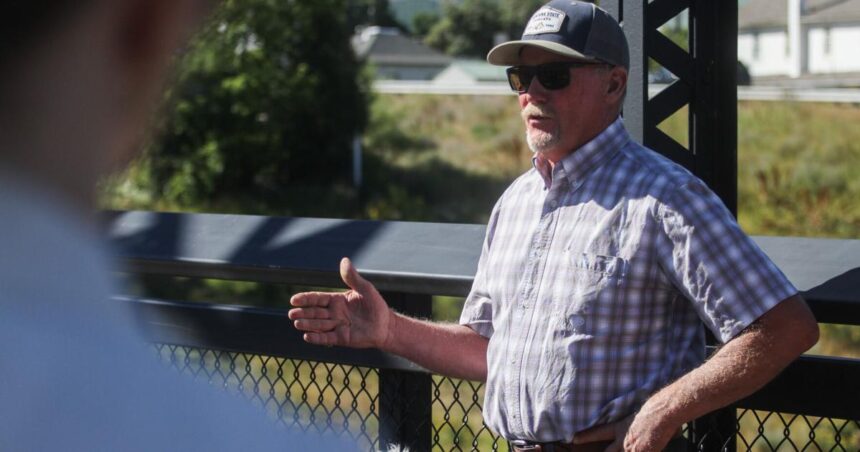Drought, like farming, has a ripple effect.
El Niño was predicted, but the extent of this drought wasn’t as clear. The Blackfoot River has seen significant declines in water levels this summer due to low snowpack, dry conditions, and high temperatures.
Kelsey Jencso, a professor at the University of Montana and Montana state climatologist, stated that the Blackfoot River Valley is facing “record-setting low streamflow conditions” due to the ongoing drought.
“I think people in agriculture understand drought, fire danger, and weather conditions,” rancher Danny Iverson said. “I wonder if the general population truly comprehends the devastation of drought. In America, we never run out of food.”
Ranchers have endured hot, dry seasons for a long time. However, this year is the worst in terms of stream flow and precipitation for Iverson and his family, who have been ranching cattle in the Potomac for over 50 years.
The family has only a fifth of their usual water supply. Water from the Blackfoot River hasn’t been enough to fulfill any water rights. In a good year, the water typically runs out by July and August.
Despite the challenging conditions, the family is coping well this season, largely due to luck with soil and resources. Some neighbors haven’t fared as well due to weather and environmental factors.
“We haven’t seen a year this bad in a long time,” Iverson added. “When you get two years in a row like this, it can be devastating.”
Representatives from the University of Montana Climate Office and the Blackfoot Challenge met to discuss severe water shortages and the critical need for water conservation at the Milltown pedestrian bridge over the Blackfoot River.
This winter had an unusually low snowpack, with the Blackfoot watershed receiving only 57% of its average snow moisture by April 1. The cool, moist spring weather didn’t provide sufficient relief, according to Jencso.
“We knew early on that things were going to be pretty bad this year,” Jencso said. “We anticipate these conditions continuing through the summer and winter, with increasing unpredictability based on past experiences.”
The Blackfoot River Valley is now facing “exceptional” drought, indicating extreme fire risk, pasture loss, and crop damage. Surrounding areas are also struggling with “extreme” drought.
…





